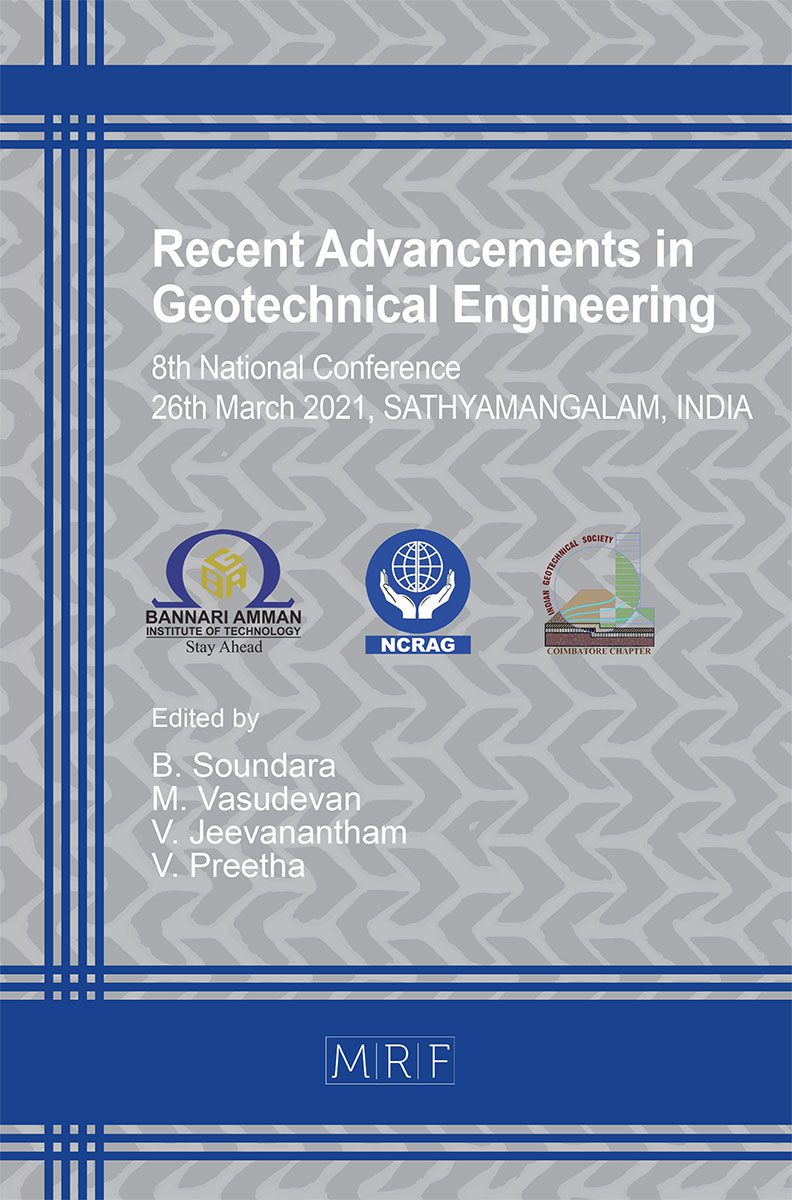Mechanical Strength Study on C&D Aggregates Replaced Concrete
S. Suchithra, S. Jayashree
download PDFAbstract. Recycled concrete was produced to overcome the problem of disposal of construction and demolition waste and lack of availability of natural materials. To improve the characteristics of recycled concrete, new treatments and suggestions were given by the researchers. This paper investigates the compressive strength of recycled aggregate concrete having the replacement of 0, 30, 40, 50 & 60% recycled coarse aggregates. The compressive strength of recycled concrete in water curing is compared with steam curing. The compressive strength of concrete is not much affected because of the use of large size recycled aggregates. The use of saturated dried surface large size recycled aggregates improves the strength of concrete.
Keywords
Recycled Coarse Aggregates, Accelerated Steam Curing, Water Absorption, Construction and Demolition Waste
Published online 8/15/2021, 8 pages
Copyright © 2021 by the author(s)
Published under license by Materials Research Forum LLC., Millersville PA, USA
Citation: S. Suchithra, S. Jayashree, Mechanical Strength Study on C&D Aggregates Replaced Concrete, Materials Research Proceedings, Vol. 19, pp 142-149, 2021
DOI: https://doi.org/10.21741/9781644901618-18
The article was published as article 18 of the book Recent Advancements in Geotechnical Engineering
![]() Content from this work may be used under the terms of the Creative Commons Attribution 3.0 licence. Any further distribution of this work must maintain attribution to the author(s) and the title of the work, journal citation and DOI.
Content from this work may be used under the terms of the Creative Commons Attribution 3.0 licence. Any further distribution of this work must maintain attribution to the author(s) and the title of the work, journal citation and DOI.
References
[1] M.R. Ponnada, K. P, Construction and Demolition Waste Management – A Review, Int. J. Adv. Sci. Technol. 84 (2015) 19–46. https://doi.org/10.14257/ijast.2015.84.03.
[2] R. V. Silva, R. Neves, J. De Brito, R.K. Dhir, Carbonation behaviour of recycled aggregate concrete, Cem. Concr. Compos. 62 (2015) 22–32. https://doi.org/10.1016/j.cemconcomp.2015.04.017.
[3] C. Liang, H. Ma, Y. Pan, Z. Ma, Z. Duan, Z. He, Chloride permeability and the caused steel corrosion in the concrete with carbonated recycled aggregate, Constr. Build. Mater. 218 (2019) 506–518. https://doi.org/10.1016/j.conbuildmat.2019.05.136.
[4] B. Cantero, I.F. Sáez del Bosque, A. Matías, M.I. Sánchez de Rojas, C. Medina, Inclusion of construction and demolition waste as a coarse aggregate and a cement addition in structural concrete design, Arch. Civ. Mech. Eng. 19 (2019) 1338–1352. https://doi.org/10.1016/j.acme.2019.08.004.
[5] A. Juan-Valdés, D. Rodríguez-Robles, J. García-González, M.I. Sánchez de Rojas Gómez, M. Ignacio Guerra-Romero, N. De Belie, J.M. Morán-del Pozo, Mechanical and microstructural properties of recycled concretes mixed with ceramic recycled cement and secondary recycled aggregates. A viable option for future concrete, Constr. Build. Mater. (2020). https://doi.org/10.1016/j.conbuildmat.2020.121455.
[6] Z. Ma, W. Li, H. Wu, C. Cao, Chloride permeability of concrete mixed with activity recycled powder obtained from C&D waste, Constr. Build. Mater. 199 (2019) 652–663. https://doi.org/10.1016/j.conbuildmat.2018.12.065.
[7] A. Adessina, A. Ben Fraj, J.F. Barthélémy, C. Chateau, D. Garnier, Experimental and micromechanical investigation on the mechanical and durability properties of recycled aggregates concrete, Cem. Concr. Res. 126 (2019) 105900. https://doi.org/10.1016/j.cemconres.2019.105900.
[8] L. Restuccia, C. Spoto, G.A. Ferro, J.M. Tulliani, Recycled Mortars with C&D Waste, Procedia Struct. Integr. 2 (2016) 2896–2904. https://doi.org/10.1016/j.prostr.2016.06.362.
[9] R. Rao, Q. Deng, J. Fu, C. Liu, X. Ouyang, Y. Huang, Improvement of mechanical strength of recycled blend concrete with secondary vibrating approach, Constr. Build. Mater. 237 (2020) 117661. https://doi.org/10.1016/j.conbuildmat.2019.117661.
[10] Bureau of Indian Standards (BIS), Concrete Mix Proportioning- Guidelines, Bur. Indian Stand. Second Rev (2019) 1–40.












